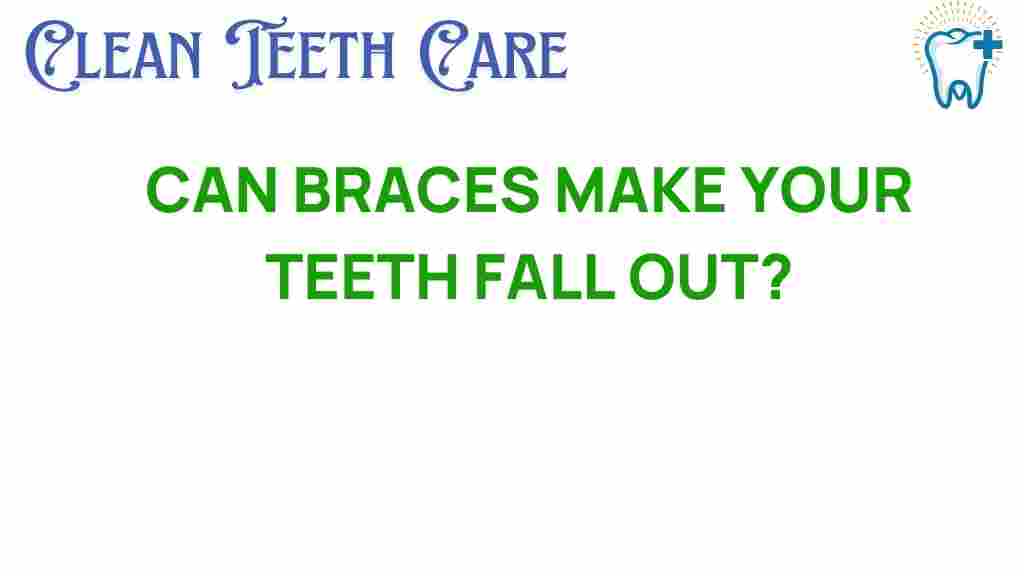Are Braces a Hidden Danger? The Truth About Teeth and Orthodontics
Braces are a common orthodontic treatment that many children and adults undergo to improve their dental health and achieve a beautiful smile. However, with the rise of various orthodontic myths and misconceptions, it’s essential to understand both the benefits and potential risks associated with braces. In this article, we will delve into the truth behind braces, explore their impact on dental health, and address common myths surrounding orthodontics.
The Importance of Dental Health
Dental health is crucial not just for a beautiful smile, but also for overall well-being. Poor dental hygiene can lead to various health issues, including:
- Cavities
- Gum disease
- Tooth loss
- Digestive problems
- Self-esteem issues
Braces play a vital role in enhancing dental health by correcting misalignments and malocclusions (improper bites). However, it’s important to recognize that braces require diligent oral care to prevent complications.
Understanding Orthodontics
Orthodontics is a specialized field of dentistry focused on diagnosing, preventing, and treating dental and facial irregularities. The most common treatments involve the use of braces, which apply gentle pressure on teeth to gradually shift them into the desired position.
Common Myths About Braces
Despite their widespread use, several myths about braces and orthodontics persist. Let’s address some of these misconceptions:
- Myth 1: Braces are only for kids.
- Myth 2: Braces are purely cosmetic.
- Myth 3: Wearing braces will guarantee perfect teeth.
- Myth 4: Orthodontic treatment is always painful.
- Myth 5: You can’t eat anything while wearing braces.
Understanding these myths is crucial for making informed decisions about orthodontic treatment and maintaining proper oral care.
The Risks Associated with Braces
While braces offer numerous benefits, there are potential risks that patients should be aware of:
- Tooth Decay: Poor oral hygiene can lead to cavities, as food particles can get trapped around brackets and wires.
- Gum Disease: Inadequate cleaning can result in gum inflammation and infection.
- Tooth Loss: Severe cases of neglect can lead to tooth loss, particularly if gum disease is not treated.
- Root Resorption: This is a condition where the tooth roots shorten during treatment, which can affect long-term stability.
- Discomfort: While not necessarily dangerous, discomfort and soreness can occur, especially after adjustments.
It is essential to follow your orthodontist’s guidelines for care to minimize these risks.
Step-by-Step Process of Getting Braces
Understanding the process of getting braces can help alleviate concerns and prepare you for what to expect:
- Initial Consultation: Your orthodontist will evaluate your dental health and determine the necessity of braces.
- X-Rays and Impressions: Diagnostic imaging and molds of your teeth will be taken to create a personalized treatment plan.
- Braces Placement: The orthodontist will attach brackets to your teeth and thread wires through them.
- Regular Adjustments: You will visit your orthodontist every 4-6 weeks for adjustments to ensure proper movement of the teeth.
- Retention: After braces are removed, you will likely need to wear a retainer to maintain your new smile.
By understanding this process, patients can better prepare for their orthodontic journey and address any concerns with their orthodontist.
Tips for Maintaining Oral Care During Orthodontic Treatment
Maintaining proper oral care while wearing braces is crucial for preventing dental health issues:
- Brush Regularly: Brush your teeth at least twice a day using a soft-bristle toothbrush and fluoride toothpaste.
- Floss Daily: Use floss threaders or orthodontic flossers to clean between teeth and around brackets.
- Use Mouthwash: An antibacterial mouthwash can help reduce plaque build-up.
- Limit Sugary Foods: Avoid sticky and sugary foods that can adhere to braces and cause cavities.
- Stay Hydrated: Drinking water helps wash away food particles and bacteria.
Common Treatments in Orthodontics
Orthodontics offers several treatments besides traditional braces, including:
- Clear Aligners: These are removable trays that gradually shift teeth into place without the use of brackets and wires.
- Lingual Braces: These are placed on the back of the teeth, making them less visible.
- Retainers: Used after braces to keep teeth in their new position.
- Surgical Orthodontics: In some cases, surgical intervention may be necessary to correct severe misalignments.
Each treatment option has its own set of benefits and considerations, making it essential to consult with an orthodontist to determine the best approach for your needs.
Prevention of Dental Issues During Orthodontic Treatment
Preventing dental issues during orthodontic treatment involves a proactive approach:
- Regular Dental Checkups: Visit your dentist every six months for professional cleanings and check-ups.
- Follow Orthodontist Instructions: Adhere to any dietary restrictions and care instructions provided by your orthodontist.
- Educate Yourself: Understanding the importance of oral care can empower patients to take charge of their dental health.
Braces are a powerful tool in orthodontics that can significantly improve dental health and aesthetics. However, it is vital to address common myths and understand the potential risks, including tooth loss and other complications. With diligent oral care and a thorough understanding of the treatment process, patients can enjoy the benefits of braces without falling prey to hidden dangers.
For more information on orthodontic treatments and maintaining dental health, consider visiting this resource. If you’re looking for a more personalized approach, consult with your local orthodontist to discuss the best options for you or your child.
Remember, the journey to a healthier smile starts with informed choices and proper care!
This article is in the category Treatments and created by CleanTeethCare Team
